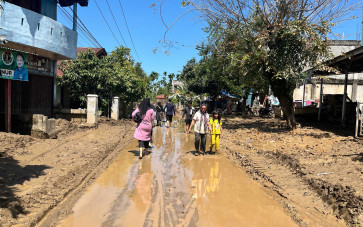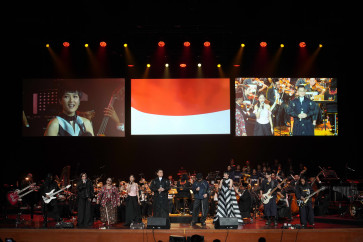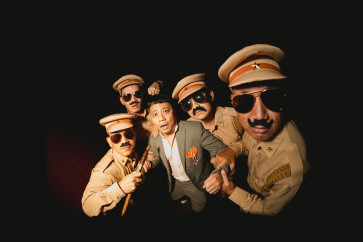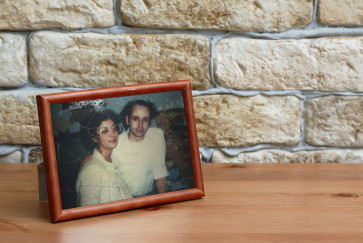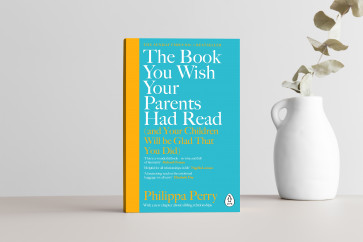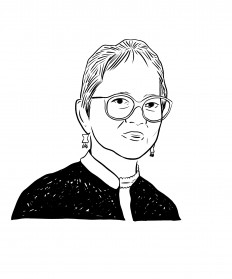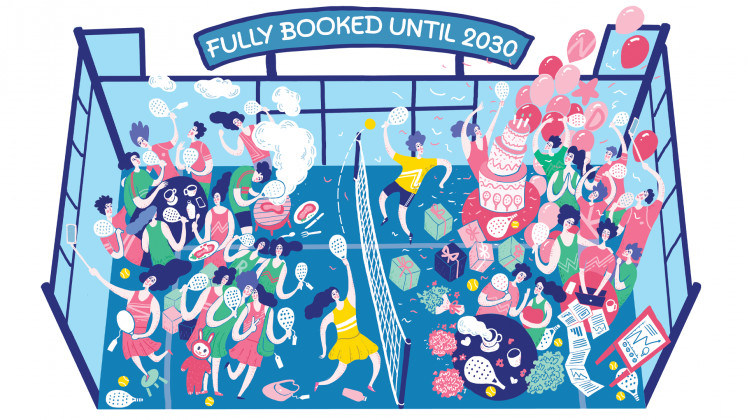The illustration is made using a combination of digital imaging and digital painting techniques from the painting by René Magritte, 'The Son of Man’.
Over the past few decades, women have made remarkable progress in breaking free from the constraints of a patriarchal culture that has dominated the world for centuries. While gender inequality became a critical issue in many countries, including Indonesia, it remained largely overlooked in the country's political discourse.
This changed dramatically in 1999 when the Indonesian Democratic Party of Struggle (PDI-P) won 34 percent of the legislative vote, securing the most seats in the People's Consultative Assembly (MPR). Its leader, Megawati Soekarnoputri, was poised to become the next president. Suddenly, "gender" became a hot topic, sparking discussions across all levels of society.
The rise of Megawati is a remarkable story. Despite facing public scorn, defamation and victimization, she persisted silently until she ultimately overcame the fierce opposition to a woman leading the nation. Defying expectations, she became Indonesia's first female president.
The journey of Indonesian women artists mirrors Megawati’s path. Despite facing discrimination from curators and art historians, they remained silent, as was expected of women in a traditional context.
Consider the Kesenian Indonesia di Amerika Serikat (Indonesian Art in the US) event in 1990-1992, which included only four women out of 60 artists. The 1993 Exhibition of Modern Indonesian Art in Amsterdam featured 22 participants but excluded women entirely. The Indonesian Fine Arts Foundation’s Art Bourse in May 1997, however, made a modest effort by selecting 10 women out of 82 participants.
Yet, the Bonhams Glerum auction in Singapore (December 1997) featured only four women out of 117 participants. Even the 1997 Modernities and Memories traveling exhibition, despite having two female curators focusing on Islamic world art, did not include a single woman from Indonesia, unlike Turkey and Pakistan.

Thank you!
For signing up to our newsletter.
Please check your email for your newsletter subscription.
Read also: Old sound, new nationThis raises the question: were the Indonesian female curators powerless, or did they simply yield to their male colleagues?
As one senior artist confided to me, it would have been beneath their dignity to protest such discriminatory selections. Instead, they preferred to simply work harder and prove their worth. And so they did.
A turning point
The year 1998 was one of devastation—marked by collapsing economies, escalating political tensions, social unrest and oppressive practices. Gender issues, however, were largely absent from the platforms of the 48 political parties contesting the elections.
That is, until Megawati emerged as a serious contender for the presidency. Suddenly, gender became a central issue, with many religious and political leaders vehemently opposing the idea of a female president. In the heat of the opposition, it was forgotten that at one point in history, women had ruled the Muslim state of Aceh Darussalam for 59 years.
But women were already on the move, taking their place in the public and political arenas to make their voices heard. They took to the streets in never-before held demonstrations, raising their voices to demand 20 percent female participation in government-backed World Bank labor projects. They had gathered at the Hotel Indonesia traffic circle under the banner of Suara Ibu Peduli, advocating as mothers for a better standard of living. Women from all walks of life joined these movements.
The brutal mass rapes of Chinese-Indonesian women, however, sent shockwaves through the nation, deeply wounding women’s dignity. The government’s denial of these atrocities only fueled women’s solidarity.
Saparinah Sadli, a staunch advocate of women's rights as human rights, led a delegation of 22 women to meet then-president BJ Habibie. They demanded an apology and the formation of the National Commission on Violence Against Women, which was established by presidential decree in October 1998.
Responding in art
Initially, women artists were stunned by the violence against women. Their anger, however, found expression through art.
In response, feminist and cultural figure Toeti Heraty N. Roosseno, alongside curator Jim Supangkat, organized an exhibition in Italy in 1998. Titled Women in the Realm of Spirituality, the exhibition showcased the works of 16 Indonesian artists, revealing a spirituality akin to a revolution.
Read also: Best-selling Indonesian authors you should be reading
Held at Pontificia Universitas Gregoriana in Rome, in the Vatican, the exhibition received praise from Centro AVE Arte-Loppiano-Incisiva (International Art Center in Florence) and the press, who referred to the artists as "Indonesian women warriors".
Cardinal Paul Poupard remarked: "The world may be built by man, but it can be blessed only by the sign of woman."
The exhibition left a profound impact, with the clergy admitting they learned more from the artists’ works than from classroom theory.
Each piece signified change, but the most remarkable contributions came from artists in their 70s—women who were not typically seen as activists—whose concepts and styles evolved radically.
Evolving artists
For instance, Paula Isman, a devout Catholic, placed Eve, traditionally portrayed as a temptress and sinner, together with Mary, the mother of God, in one sculpture. Through her work, Paula argued that God values women equally.
Ratmini Soedjatmoko, once known for depicting traditional Indonesian fabrics, now likens authority figures to Dasamuka, an evil character from wayang mythology.
Wiranti Tedjasukmana made a bold departure from her usual folklore-inspired imagery with Justice Attacked, which depicted a woman in a kebaya (traditional lace blouse) encircled by green serpents. Meanwhile, Sriyani Hudinoto, known for her static paintings of birds and flowers, displayed herself in a pencak silat (martial art) pose in Promulgation, flying freely with the birds.
Astara Rasjid, known as a painter, declared the canvas was no longer sufficient to express herself and for the first time created a three-dimensional work, Prettified Cage. Tris Neddy Santo, a graphic artist and photographer, ventured into digital art, becoming the first Indonesian artist to embrace this medium.
Inda C. Utoyo explored themes of women's dependence in the ancient legend of Kharmawibangga, one of the Borobudur reliefs, linking it to modern power structures that continue to subordinate women.
Women unleashed
Today, women artists still organize their own exhibitions. Events like Women and the Dissemination of the Meaning of Space (2001), The Curtain Opens (2007), Into the Future (2019) and Infusions into Contemporary Art (2022) have empowered female artists, with significant support from women-led institutions like Yayasan SeniRupa Indonesia and Yayasan Cemara Enam. Quite recently, artist Revoluta Shafry independently organized the mega exhibition Marwah Perempuan (2023), which included 78 artists from all over Indonesia.
In recent years, women have unleashed an unstoppable energy, expanding the boundaries of artistic imagination. Their works now reflect the spirit of the changing times, shaped by advanced technology, scientific discoveries and reimagined traditions and ancient culture.
A few issues that have recently emerged in the contemporary art world help illustrate the new vision of women in contemporary art. These include speculative thinking, where the human being is no longer at the center of the ecosystem (Natasha Tontey); the harmonization of digital technology with ancient, environmental, spiritual and cultural wisdom (Indah Arshad); the connection between science fiction and mythology, which leads to visions of a new world (Irene Agrivina); and the relationship between the narratives of old scrolls and contemporary realities (Citra Sasmita).
No longer do themes of female dignity stand alone as the most important issues for women artists, though it may still linger underneath, but it is the vision for a world of tomorrow that matters most. And that tomorrow is now.
Carla Bianpoen is a journalist, writer and observer of contemporary art and culture.




